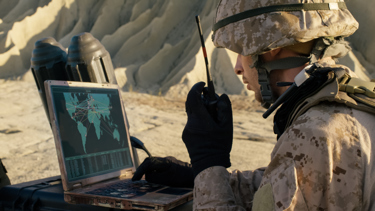Amplifiers To Support Software-Defined Radios
By Neil Ross, AR Modular RF

Advancing Radio Technology
Like all technologies, military tactical radios are evolving. With the help of software-based transceiver architectures, military tactical radios are taking advantage of faster, more complex waveforms with new radios supporting modern modulations and communications protocols. Following these advancements, the ancillary hardware supporting these radios must keep pace. Specifically, software-defined radios (SDRs) — which rely more on software for signal processing than hardware components — require more agile and responsive booster amplifiers with greater speed, precision, and versatility to maintain signal integrity and extend communications.
In recent years, the demands new tactical radio systems are placing on the physical layer performance of supporting hardware have increased by orders of magnitude. However, what can be done with relative ease in software and at very small signal levels (i.e., the digital domain) is not so easily accomplished at higher RF power levels (i.e., the analog domain). As the tactical radio market moves beyond the use of legacy proprietary waveforms (e.g., SINCGARS, DAMA) and embraces modern, often commercial technologies (e.g., LTE, CDMA, MANET, and mesh networks), booster amplifier designers face new challenges.
With this shift from hardware to software-based communications signal processing, radio designers are taking advantage of every single clock cycle to push as much data through as possible. As a result, key booster amplifier metrics have shifted from the frequency to the time domain. Booster amplifiers are no longer simply gauged and graded by power and frequency alone, but by speed of response and communication link metrics including packet and bit error rates.
Get unlimited access to:
Enter your credentials below to log in. Not yet a member of RF Globalnet? Subscribe today.
